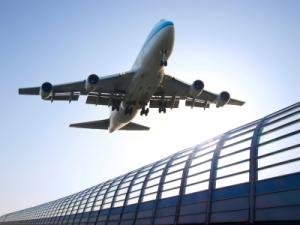What is Air Freight? All Your Questions Answered

Air freight plays a vital role in the global economy, enabling businesses to transport goods quickly and efficiently across vast distances.
It is also essential for personal shipping requirements, allowing individuals to send packages rapidly, both within their own countries and overseas.
Whether it’s for urgent business deliveries or personal items requiring swift transport, air freight meets diverse shipping needs with speed and reliability.
But what exactly does air freight mean, and how does it operate? In this article, we’ll explore the fundamentals of air freight, including its costs, services, and the logistics involved in air freight shipping.
What is Air Freight?
Air freight refers to the transportation of goods by aircraft. It is the fastest method for transporting items over long distances.
Air freight is commonly used for shipping time-sensitive cargo, such as electronics, pharmaceuticals, and perishable goods.
What are Air Freight Services?
Air freight services encompass a range of logistics solutions provided by airlines and freight forwarders.
Such services include express shipping for urgent deliveries, standard air freight for less time-sensitive shipments, and specialised options for handling specific cargo types such as hazardous materials or oversized items.
• Express Shipping: Fast delivery for urgent packages.
• Standard Air Freight: Reliable service for less time-sensitive shipments.
• Specialised Services: Handling for specific goods such as hazardous materials or oversized items.
Understanding the various services available will enable you to make an informed decision and select the best option for your specific needs.
How are Air Freight Costs Calculated?
Calculating air freight costs is an important aspect of logistics that directly impacts shipping budgets and profitability.
Various factors come into play, including the weight and dimensions of the cargo, the distance to the destination, and any additional services required.
Understanding how air freight costs are determined helps businesses optimise their shipping strategies and manage expenses effectively.
Costs typically include:
1. Base Rate: Determined by the airline and can vary based on distance and service type.
2. Fuel Surcharges: Additional fees that account for fluctuations in fuel prices.
3. Security Fees: Charges related to the security measures for air transport.
4. Handling Costs: Costs for loading and unloading cargo.
How to Calculate Chargeable Weight in Air Freight?
Chargeable weight in air freight refers to the weight used to calculate shipping costs, which can be either the actual weight, or the dimensional weight – whichever is greater.
Actual weight: is the weight of the cargo as measured on a scale.
Dimensional weight: is calculated based on the size of the shipment, using a specific formula that typically divides the volume (length × width × height) by a factor (typically 5000).
To calculate chargeable weight for air freight, compare the actual weight and the dimensional weight and use the higher figure.
This approach ensures that airlines account for both the physical weight and the space the cargo occupies in the aircraft, providing a fair pricing structure for air freight services.
Is Air Freight Expensive?
Generally, air freight tends to be more costly than sea freight due to the speed and convenience it offers.
However, for high-value, low-volume goods, the benefits often outweigh the higher costs.
What is the Maximum Weight for Air Freight?
The maximum weight for air freight can vary significantly depending on the airline, the aircraft type, and specific regulations.
Generally, individual pieces of cargo are typically limited to between 150 kg (330 lbs) and 300 kg (660 lbs).
For larger shipments, freight forwarders can often arrange for special handling, allowing for higher total weights when combined into a single shipment.
It’s vital to check with your chosen airline for precise weight limits to ensure compliance and avoid additional charges or delays. Alternatively, a freight forwarding company, such as MCL, can handle this for you.
What Is the Maximum Height for Air Freight?
The maximum height for air freight is determined by the specific airline and the type of aircraft used for transport.
Height limits typically range from 60 inches (152 cm) to around 120 inches (305 cm) for individual pieces.
However, larger cargo may require special arrangements or different aircraft that can accommodate oversized shipments.
It’s imperative that you verify the height restrictions with their airline or freight forwarder to ensure compliance and facilitate smooth handling during transit.
Why is Sea Freight Cheaper Than Air Freight?
Sea freight is generally cheaper than air freight for several reasons.
Firstly, cargo ships can carry significantly larger quantities of goods compared to aircraft, which allows for shipping costs to be spread over a greater volume.
Also, the operational costs associated with sea transport, including fuel, labour, and maintenance, are typically lower than those for air transport, which involves higher fuel consumption and faster turnaround times.
Furthermore, sea freight is often used for bulk shipments that are less time-sensitive, making it a cost-effective option for businesses and individuals looking to minimise shipping expenses.
By contrast, air freight is much faster and is often used for smaller, high-value shipments where speed is critical. The operational costs associated with air freight therefore lead to higher shipping rates.
Conclusion
In summary, air freight is a fast and efficient method of transporting goods.
Understanding key concepts such as chargeable weight, cost calculations, and service options can help shippers make informed decisions.
While air freight can be more expensive than sea freight, its speed and reliability often justify the cost for urgent shipments.
If you’re looking to simplify your shipping process and take the hassle out of logistics, MCL is here to help. Contact our friendly team and allow us to handle all your air freight needs.



